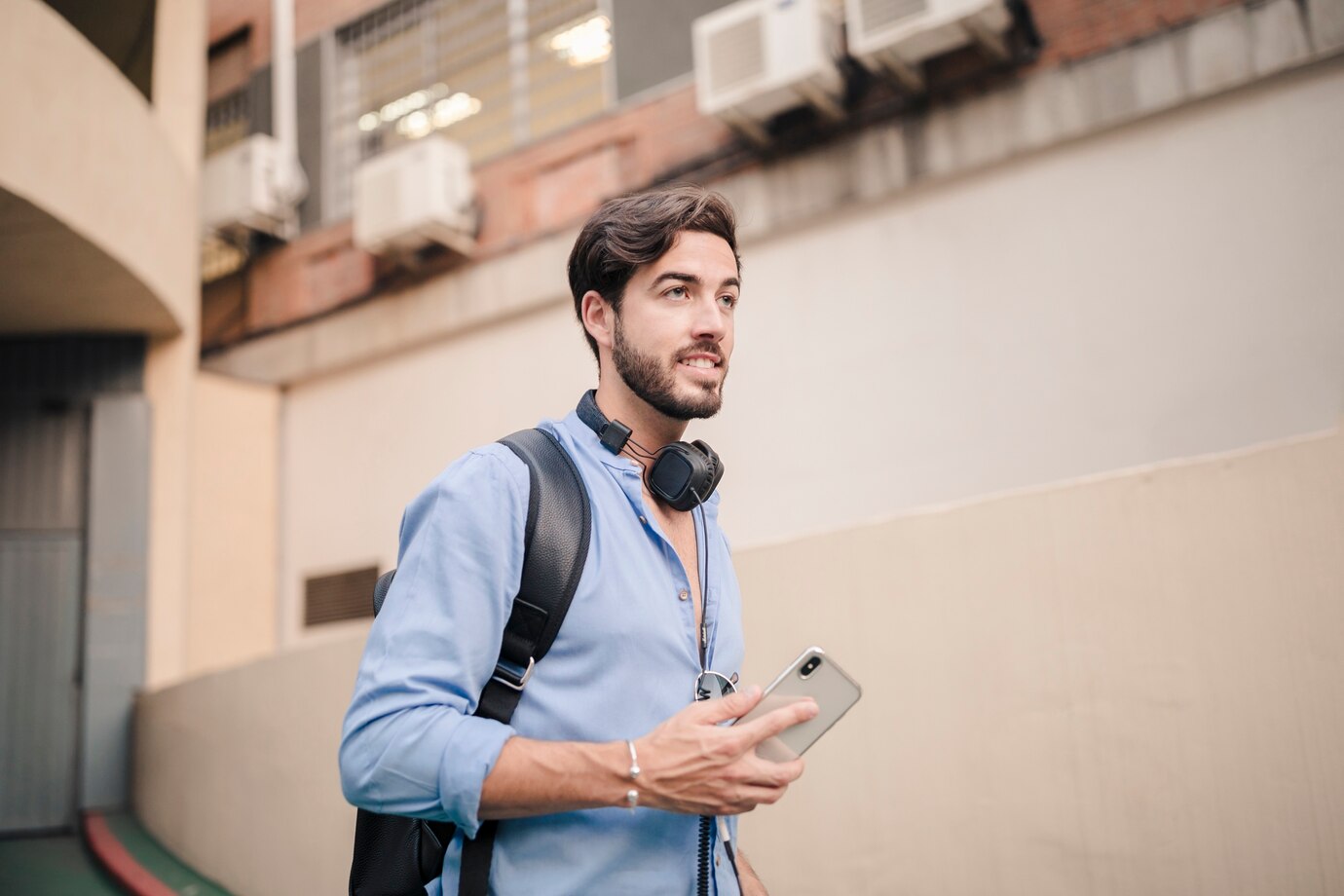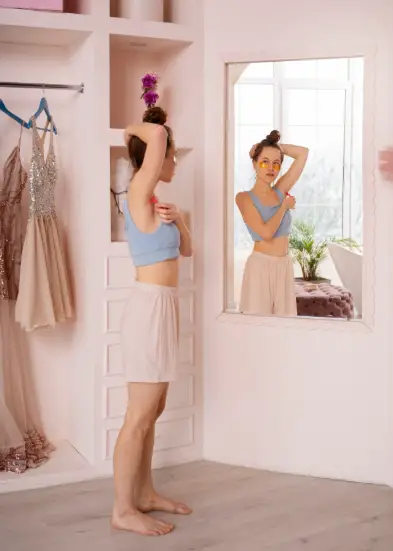In today’s world, privacy is one of our most valuable assets. Whether we’re in a hotel room, a shopping mall fitting room, or a public restroom, most of us rarely stop to consider that our surroundings could compromise our safety. One common concern that often goes unnoticed is the possibility of a two-way mirror.
While most mirrors are harmless and function only as reflective surfaces, certain types of mirrors are designed with a special coating that allows visibility from the other side. These two-way mirrors can create a serious risk to privacy if misused.
Fortunately, with a few simple checks and an understanding of how mirrors work, you can quickly determine whether the mirror in front of you is ordinary—or if it requires caution.
What’s the Difference Between a Regular Mirror and a Two-Way Mirror?
Ordinary mirrors are made by applying a reflective layer, such as aluminum or silver, to the back of a pane of glass. This setup creates a reflection while leaving a small gap between the surface of the glass and the reflective layer.
A two-way mirror, however, is manufactured differently. Instead of a fully opaque reflective coating, it uses a thin, semi-transparent reflective material. This allows light to pass through from one side while still reflecting on the other. When installed in a dimly lit room with a brighter room on the opposite side, people behind the mirror can observe without being seen.
Key takeaway: A normal mirror shows a visible gap between your finger and its reflection. A two-way mirror does not.
Practical Tests You Can Do Anywhere
If you’re unsure whether the mirror in a fitting room, hotel, or public restroom is real or two-way, here are some simple, quick methods to check:
1. The Finger Test
-
Place your fingertip gently against the surface of the mirror.
-
If there is a visible gap between your finger and the reflected fingertip, it’s a normal mirror.
-
If your fingertip appears to touch its reflection directly—no gap at all—the mirror could be two-way.
2. The Light Test
-
Use your phone’s flashlight and shine it closely at the mirror.
-
If light seems to pass through or reveals an empty space behind, the mirror may not be solid.
3. The Knock Test
-
Tap the mirror with your knuckle.
-
A regular mirror typically produces a solid, muted sound.
-
If the sound is hollow or echoing, it may indicate a cavity behind the glass.
4. The Darkness Test
-
Dim the lights in the room (or shade the mirror area with a jacket or bag).
-
If it’s a two-way mirror, you may notice faint outlines or objects behind it.
Why Should You Be Cautious?
Some may dismiss these tests as paranoia, but history proves otherwise. There have been documented cases of two-way mirrors used inappropriately in hotels, spas, and even retail stores. The risks include:
-
Invasion of privacy: Personal activities may be watched without consent.
-
Secret recording: Hidden surveillance devices may capture sensitive footage.
-
Personal safety risks: Vulnerable individuals could become targets.
Taking just a few seconds to check a mirror can prevent far greater consequences.
Additional Security Tips Beyond Mirrors
While mirror checks are important, protecting your privacy involves broader awareness. Here are extra precautions you can adopt:
1. Scan for Hidden Cameras
-
Use your phone’s camera a flashlight mode to scan suspicious objects (smoke detectors, clocks, air purifiers). Camera lenses often reflect light differently.
-
Download apps that detect camera signals, though results may vary.
2. Check Ventilation Grilles and Fixtures
Unusual gaps, wires, or oddly placed vents could be hiding small devices. Always look for objects out of place in bathrooms or fitting rooms.
3. Control the Lighting
Remember: two-way mirrors require one side to be darker. If possible, balance the light by turning on more lights in the room or shining a flashlight directly at the mirror.
4. Use Fabric Barriers
If you ever feel uneasy, use a scarf, towel, or spare clothing to cover areas where you change. It’s a simple but effective protective measure.
5. Trust Your Instincts
If a room feels uncomfortable or suspicious, don’t ignore the feeling. Choose another fitting room, ask for a different hotel room, or request management staff to inspect the area.
Everyday Scenarios to Keep in Mind
-
Shopping trips: When trying on clothes in a new store, spend five seconds on a mirror check. It’s a quick habit that adds peace of mind.
-
Hotel stays: Always inspect mirrors in bathrooms or dressing areas, especially in lesser-known hotels where oversight may be weaker.
-
Public restrooms: If mirrors look unusually large, tinted, or oddly placed, test them discreetly before relaxing your guard.
-
Travel abroad: In unfamiliar places, cultural standards and regulations may differ. A quick check helps ensure your safety wherever you are.
By practicing these checks in ordinary settings, they’ll become second nature—like locking your car or checking your phone before leaving home.
Staying Safe Without Living in Fear
It’s important to balance vigilance with peace of mind. The reality is that most mirrors you encounter are completely safe. However, making a habit of quick checks takes only seconds and can significantly reduce risks.
Teach these methods to your children, teens, or loved ones who travel often. Simple awareness can empower them to protect their privacy without paranoia.
Final Thoughts
In modern life, where public and semi-private spaces are part of our routine, small precautions can have a big impact. Learning how to detect a two-way mirror is a valuable skill for anyone concerned about privacy and safety.
-
Use the finger test first—it’s fast and effective.
-
Add the light and knock tests if you’re still unsure.
-
Stay aware of your surroundings, not just mirrors, but also unusual objects in rooms.
Make it a habit: every time you step into a fitting room or hotel bathroom, spend five seconds checking. It costs nothing but could protect your privacy in priceless ways.
Remember, security doesn’t mean living in fear—it means being informed, prepared, and confident in your ability to safeguard yourself and your loved ones.

Adrian Hawthorne is a celebrated author and dedicated archivist who finds inspiration in the hidden stories of the past. Educated at Oxford, he now works at the National Archives, where preserving history fuels his evocative writing. Balancing archival precision with creative storytelling, Adrian founded the Hawthorne Institute of Literary Arts to mentor emerging writers and honor the timeless art of narrative.
